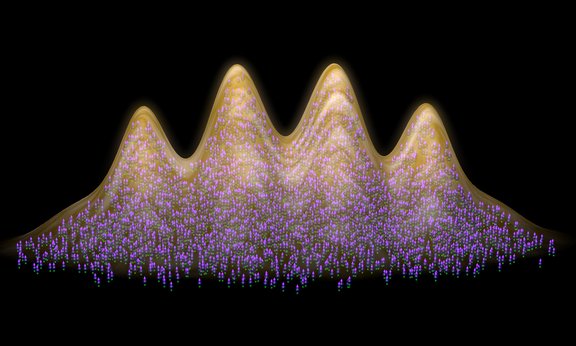Supersolidity is a paradoxical state where the matter is both crystallized and superfluid. The particles are regularly arranged like in a crystal, but at the same time they move without friction. This state of matter was already predicted 50 years ago and since then has been searched for in superfluid helium. Decades of theoretical and experimental investigations have not been successful. In 2019, research groups from Innsbruck, Pisa and Stuttgart succeeded for the first time in finding evidence for this exotic state of matter in ultracold quantum gases of erbium and dysprosium. The team led by Francesca Ferlaino at the Department of Experimental Physics at the University of Innsbruck and the Institute for Quantum Optics and Quantum Information (IQOQI) of the Austrian Academy of Sciences were able to prove these features in both gases. While in erbium the supersolid behavior is only transient, in line with the experiments in Pisa and in Stuttgart, the dysprosium realization shows an unprecedented stability. Here, the supersolid behavior not only lives long but can also be directly achieved via evaporative cooling, starting from a thermal sample. "My team is very pleased that our work on supersolidity is attracting such international attention," says Francesca Ferlaino. "The experiments show that they can provide a very good platform for further research into this paradoxical state."
The work is financially supported by the Austrian Science Fund FWF, the Austrian Academy of Sciences and the European Union.
Links
- Physics: Highlights of the Year
- Long-lived and transient supersolid behaviors in dipolar quantum gases. L. Chomaz, D. Petter, P. Ilzhöfer, G. Natale, A. Trautmann, C. Politi, G. Durastante, R. M. W. van Bijnen, A. Patscheider, M. Sohmen, M. J. Mark, and F. Ferlaino. Phys. Rev. X 9, 021012
- Dipolar Quantum Gases

